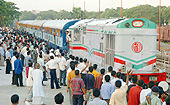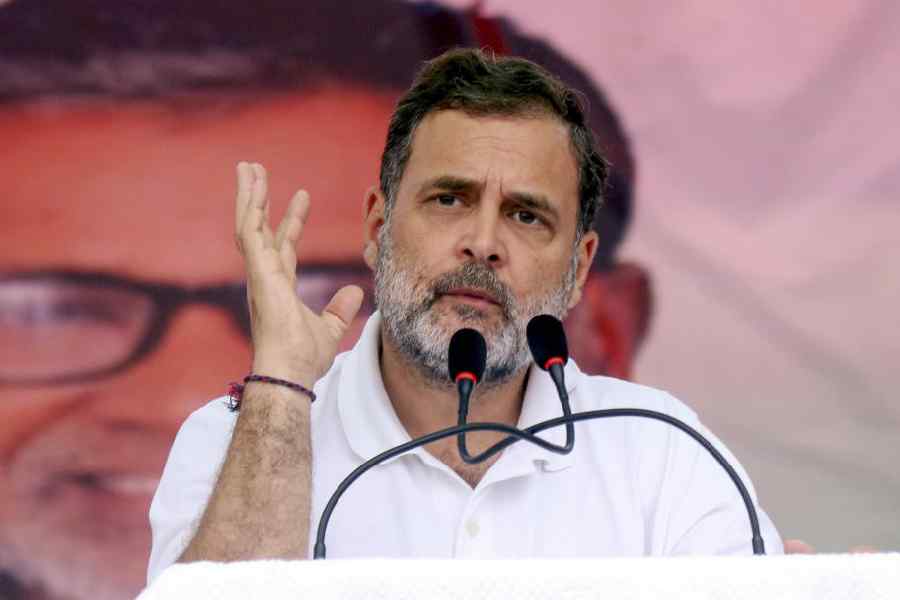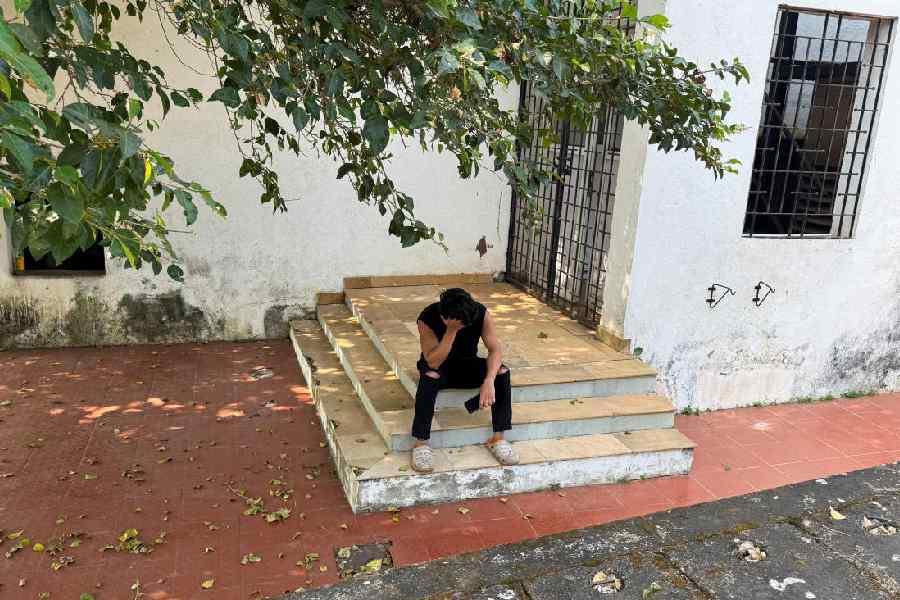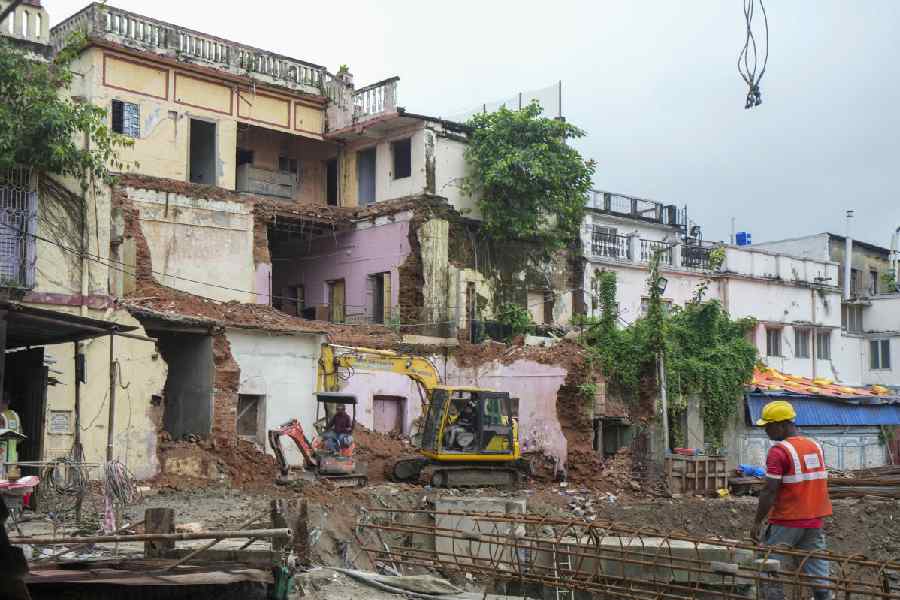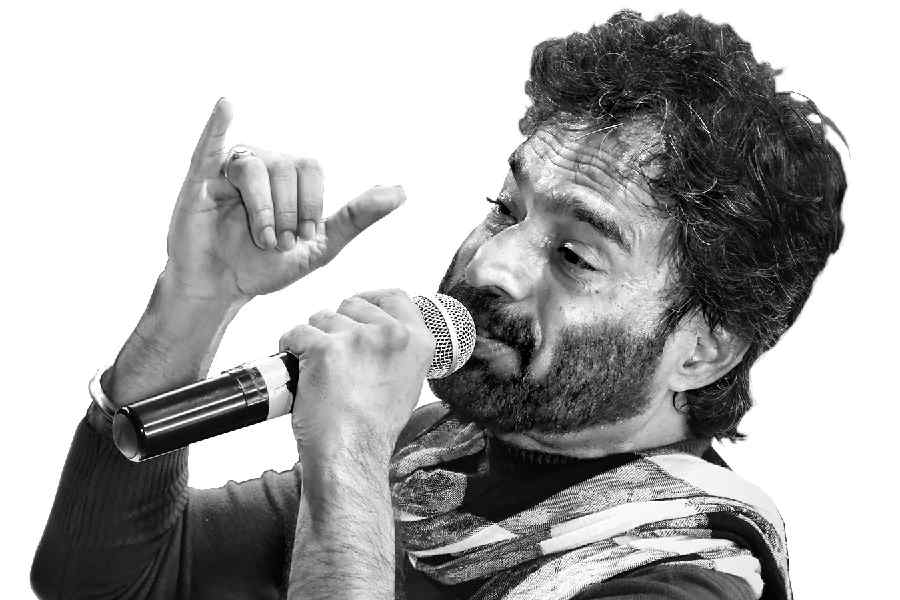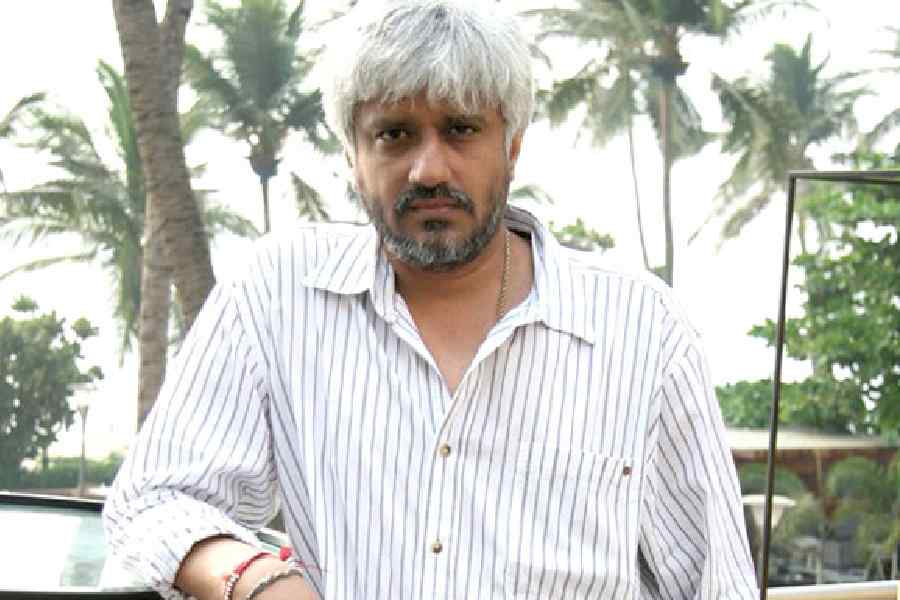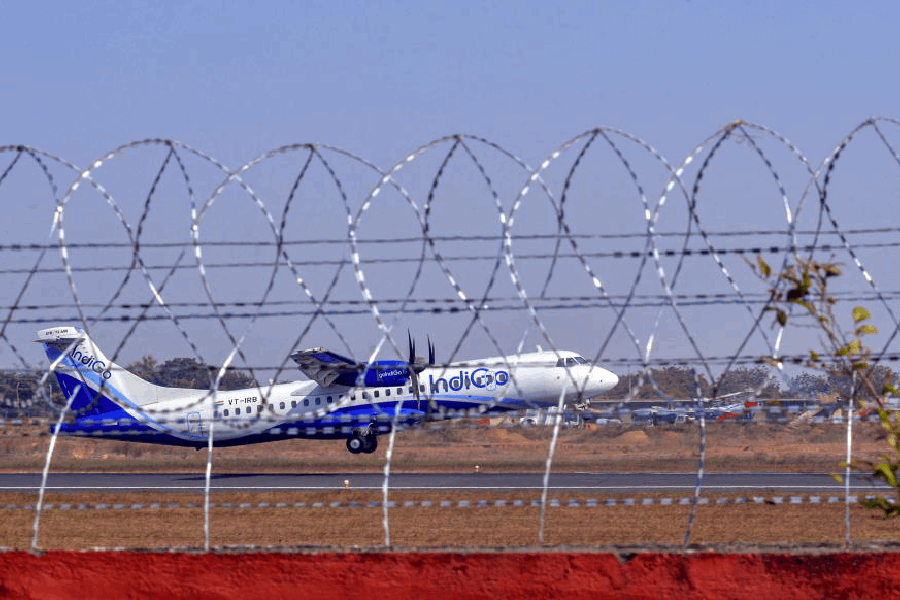 |
 |
| IN A BIND: (Top) The Moitree Express at Dhaka cantonment station and (bottom) Bangladeshi rail workers at Tongi station. Pix: Pavel Rahman |
Dinak Sohani Kabir was elated when she first heard of the train service between Calcutta and Dhaka early this year. She has a personal reason, though. The 38-year assistant professor of Dhaka’s University of Asia Pacific is, in her own words, besotted by trains.
Several months down the line, Kabir, who has written a book on the history of railways in what was once known as East Bengal, is losing hope. And, as Bangladesh heaves with a raging government-sponsored anti-corruption drive, which has landed two of its former Prime Ministers in jail, Kabir now almost despairs of ever seeing the train chugging along. “We have this political uncertainty and now this train thing is getting too complicated for comfort,” she says.
Sputtering along a bureaucratic track for more than six months, the Calcutta-Dhaka rail link is now caught in a security bind, its latest woe. It was to start in April, then postponed to August and is now slated for September. But no one knows for sure how and when Moitree (friendship) Express will twist out of the jam and get rolling.
“We have no information whatsoever about when this service will start,” says Quazi Asadullah, additional director general (operation) of the Bangladesh Railway. Not that Indian officials are more aware. “It’s hard to put a date to it,” says Jaya Varma Sinha, the railway advisor in the Indian high commission in Dhaka, when asked about the launch. Both the railways say they are ready but are waiting for a green signal. But, for that, both countries have to settle the prickliest of issues shadowing what could be a historic direct rail link between the capitals of West Bengal and Bangladesh.
India is concerned about its security and wants a fenced-in “sanitised” corridor on its side of the border for the train to pass through. India’s concerns assume significance in view of the recent Hyderabad blasts blamed largely on the Harkat-ul-Jihad-i-Islami (HuJI), a Bangladesh-based Islamic militant group. Sinha says India wants the corridor also to prevent smuggling, rampant along its border with Bangladesh.
Bangladesh recognises India’s concerns but hasn’t so far accepted fencing as the answer. Mahbub-Uz-Zaman, director general of the Bangladesh’s ministry of foreign affairs, says no “construction or installation with defence potential” can be made under an international convention within 150 yards of the “zero point” — the no-man’s land between the two countries. Instead, Dhaka has suggested joint patrolling on trains. It says both countries should also despatch more security personnel to guard the rail tracks near the border.
Delhi argues that the sanitised corridor will stretch only from the border to the last Indian station of Gede, covering 800 metres. It stresses that the fencing, too, will have “no defence potential.” “In fact, to call it a fence would be a misnomer as there will be no barbed wires,” says Sinha, an Indian Railway Traffic Service office who is involved in the negotiation. India says Bangladesh is also free to have a similar corridor on its side if it wants.
To be sure, running a cross-country train is not easy. It involves minute planning and, most important, building infrastructure. But what’s bedevilled the project — more than anything else — is conflicting demands and expectations from both sides. Bangladesh wanted immigration and customs checking done at both ends — Calcutta and Dhaka. Doing so, it argued, would save both countries from building infrastructure at border stations and would also cut the journey time and help passengers.
India has not agreed. Citing the widespread international practice of running checks at borders, Indian officials note that such checks are effective only when done at the exit and entry points of two countries. Indian officials say India and Pakistan do the same when it comes to the Samjhauta Express and the Thar Express running between the two countries.
With India and Bangladesh now concurring, the immigration and customs checking will be done at the border stations — Gede in India and Darsana in Bangladesh. Result: an effective delay of more than five hours on a single trip from Calcutta to Dhaka, pushing the journey time to beyond 12 hours. A daily bus service, launched in June 1999, between Calcutta and Dhaka already takes roughly 12 hours.
Moreover, it’s not going to be a daily service. India has shot down Bangladesh’s initial proposal to run the train six days a week and has finally agreed on a bi-weekly service, with the trains running on Saturdays and Sundays. “With the present infrastructure, there is no way we could run the train six days. Or else it would upset the crucial local train service between Gede and Sealdah,” says a senior Eastern Railway official in Calcutta.
Whatever the shortcomings, Indian and Bangladeshi officials are now keen to settle the issues to get the Moitree Express started. Two trial trains have already been run successfully between Calcutta’s Chitpur and Dhaka’s cantonment stations. Two rounds of official talks, held in Calcutta and Dhaka in July, have untangled some of the administrative complexities.
For the first time, both neighbours have agreed to share the revenue from the train, with Bangladesh receiving 75 per cent of it, as much of the 406-km route lies in that country. “It’s an absolute first. We have not done it with Pakistan,” says railway advisor Sinha. Both countries have also agreed on fares, with an AC two-tier ticket to cost $20, an AC chair car $12 and a non-AC chair car $8.
Each train will have six coaches (including a pantry car), carrying some 350 passengers. Both India and Bangladesh will provide one train each. The diesel engine train will ply non-stop and the passengers will be allowed to board and disembark only at a terminus. Crew members, including drivers, guards and ticket collectors, will not cross borders. “Both countries will have their own crew to haul it to the terminus from their respective border,” says Asadullah of Bangladesh Railways.
“People of both countries are looking forward to it. It will benefit both sides once it gets started,” says Bangladesh foreign secretary Md. Touhid Hossain. He says most of the technical glitches along the route have been sorted out. “We want the train to start as soon as possible,” Hossain says.
Yet the security issue remains. A highly-placed Bangladesh government source says that Dhaka has already received from Delhi the design and specifications of the fence it wants to erect on the Indian side of the border. “We recognise India’s security concerns and the proposal is being considered favourably,” the official says. He, however, has no idea how long it will take to clear it, if at all. “It involves an important decision at the highest level of the government.”
Doubts also linger in Dhaka about the viability of a bi-weekly train with passengers forced to spend over five hours at the border. “All I can say is that this service will not take off unless both sides cut the immigration and customs clearance time considerably,” says Muntassir Mamoon, who heads the history department at the University of Dhaka. The Bangladesh foreign secretary, too, feels that the service will be “of no use” to passengers if they are kept waiting at the border.
Railway expert Kabir says both countries should have extensively studied how cross-borders trains are run in Europe and North America before embarking on it. “Many of the problems we are facing now could then easily have been avoided,” she says.
But then, there is no going back. If nothing else, the rail links drips with diplomatic symbolism — and emotions of the people living on either side of the border. The only way out of the bind, Kabir says, is not to go around in circles, but to go forward and link the two countries by train. ASAP.
TRACK STOPPERS
![]() India wants a fenced-in, 800-metre-long sanitised corridor for the train to pass through on its side of the border. Bangladesh doesn’t like the idea and favours joint patrolling on trains and more securitymen to guard the tracks on either side of the
India wants a fenced-in, 800-metre-long sanitised corridor for the train to pass through on its side of the border. Bangladesh doesn’t like the idea and favours joint patrolling on trains and more securitymen to guard the tracks on either side of the
border.
![]() Bangladesh has accepted India’s demand to set up immigration and customs checkpoints at border stations. But it is unhappy with the amount of
Bangladesh has accepted India’s demand to set up immigration and customs checkpoints at border stations. But it is unhappy with the amount of
time it will take and the delays this will result in. It wants a joint mechanism to reduce the travel time.
![]() Bangladesh wanted the train to run six days a week. India has only agreed to a bi-weeklyservice.
Bangladesh wanted the train to run six days a week. India has only agreed to a bi-weeklyservice.

